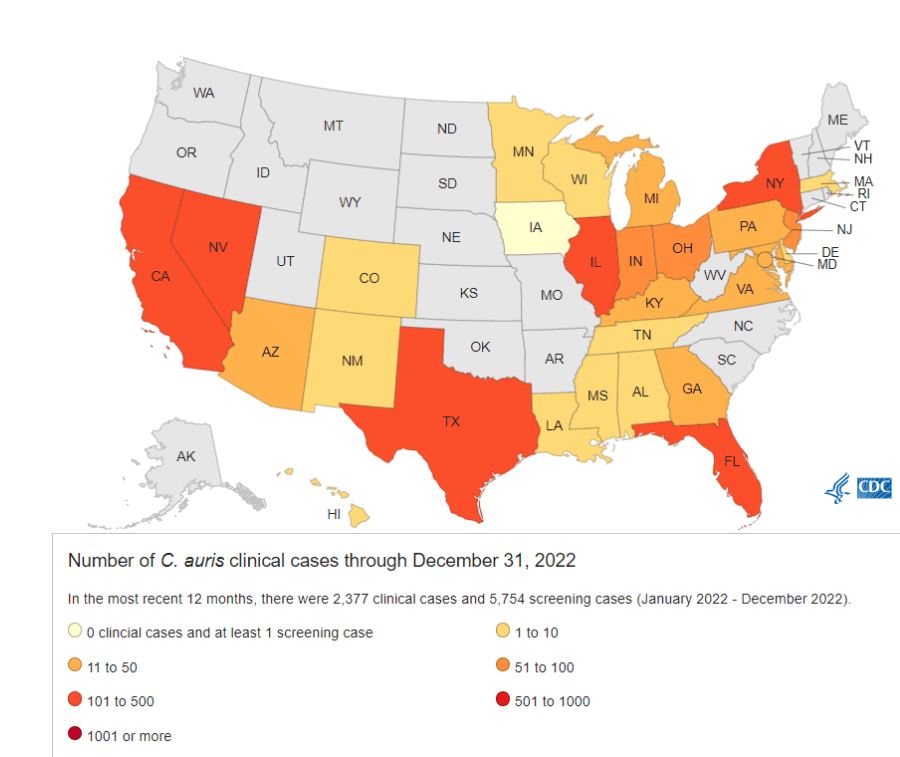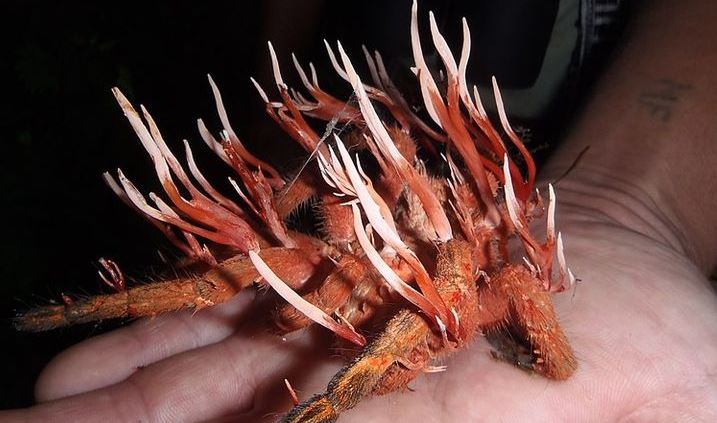Candida auris, commonly known as C. auris, is a species of yeast that can lead to severe illness, especially in individuals with compromised immune systems.
Candida auris, a drug-resistant yeast, is causing severe illness in people with weakened immune systems. A new study from the CDC shows an alarming rise in infections and cases of people carrying the fungus in US healthcare facilities.
A new government study has found that a drug-resistant fungus called Candida auris, or C. auris, is spreading rapidly in healthcare facilities throughout the United States. This type of yeast can cause severe illness in individuals with weakened immune systems, and the number of people diagnosed with infections has been increasing at an alarming rate since it was first reported in the US. The Centers for Disease Control and Prevention (CDC) reported that both the number of infections and the number of people carrying C. auris found through screening have been rising rapidly, which is especially concerning in recent years. Dr. Meghan Lyman, the lead author of the study and the chief medical officer in the CDC’s Mycotic Diseases Branch, emphasized the need for urgent action to contain the spread of this potentially deadly fungus.
The CDC has issued a warning as Mississippi fights a growing outbreak of Candida auris, a drug-resistant fungus that can be deadly for individuals with weakened immune systems. The number of infections and cases of colonization has been rapidly increasing across the US.
The Mississippi Department of Health is currently fighting a growing outbreak of Candida auris, a drug-resistant fungus that can cause severe illness in individuals with weakened immune systems. The CDC has issued a new warning on the outbreak, published in the Annals of Internal Medicine. Since November, at least 12 people in Mississippi have been infected with C. auris, with four potentially associated deaths. Ongoing transmission has been identified at two long-term care facilities, with cases also found at several other facilities in the state.
Multi-drug resistant organisms such as C. auris have become more prevalent among high-risk individuals, such as those in long-term care facilities, according to Dr. Paul Byers, the state’s epidemiologist. The CDC has found that C. auris can be found on the skin and throughout the body, and while it’s not a threat to healthy people, about one-third of those who become sick with C. auris die.
The CDC report analyzed data from state and local health departments on people infected or colonized with the fungus from 2016 through December 31, 2021. The number of infections has been rapidly increasing, with a 59% increase to 756 in 2020 and an additional 95% increase to 1,471 in 2021. The incidence of colonization has also been rising, with a 21% increase in 2020 compared to 2019 and a 209% increase to 4,041 in 2021. C. auris has now been detected in more than half of US states, according to the study. Urgent action is needed to contain the spread of this potentially deadly fungus. below we have provided a Affilliate link for Disinfecting wipes at a great deal and that is what Chase Deals does.
We recommend using disinfecting wipes on every surface you can to help keep your family safe.

The growing number of fungus samples resistant to typical treatments was particularly alarming. Dr. Meghan Lyman, the lead author of the CDC study, expects that the report will increase awareness of C. auris among healthcare providers and encourage facilities to implement proper infection control measures.
The study’s results are concerning, according to Dr. Waleed Javaid, an epidemiologist and infectious disease specialist who serves as the director of infection prevention and control at Mount Sinai Downtown in New York.
Javaid, a health expert, stated that they do not want people who watched ‘The Last of Us’ to believe that everyone will perish from the C. auris infection. He added that this infection typically affects severely ill individuals who have multiple health issues.
Javaid also stated that healthy individuals who do not have invasive medical devices like catheters inserted into their blood vessels are unlikely to be affected by C. auris, even if it spreads beyond healthcare facilities and into communities.
The main challenge is to prevent the fungus from spreading to patients in hospital intensive care units, according to Javaid. C. auris can not only colonize people who come into contact with the fungus, but also patient rooms, walls, cables, bedding, and chairs. Everything is cleaned with bleach and UV light, but the fungus can survive on surfaces.
Although the fungus was first identified in Asia in 2009, scientists discovered that C. auris had been misidentified as a different fungus in the past, after re-examining older data. Dr. Graham Snyder, medical director of infection prevention at the University of Pittsburgh Medical Center, said that this is a pattern observed with these types of pathogens. They start out rare and then become more common as they emerge in more and more places.
Snyder said that it is critical to contain the pathogen to prevent it from spreading beyond hospitals and long-term care facilities, as happened with the drug-resistant bacteria MRSA. MRSA is now commonly seen in the community. The CDC is sounding the alarm to prevent the same thing from happening with C. auris, but Snyder said he does not know if it will become as widespread as MRSA.

